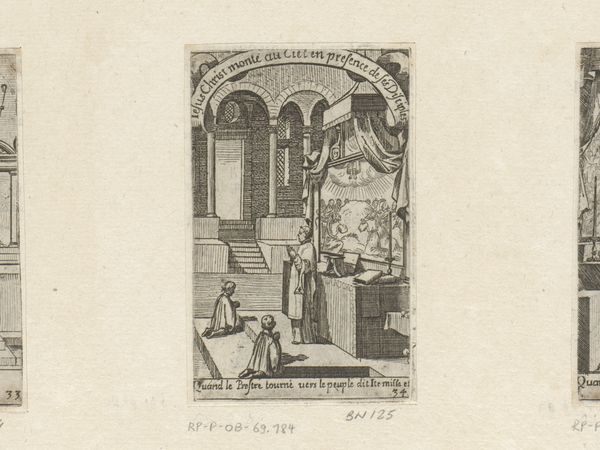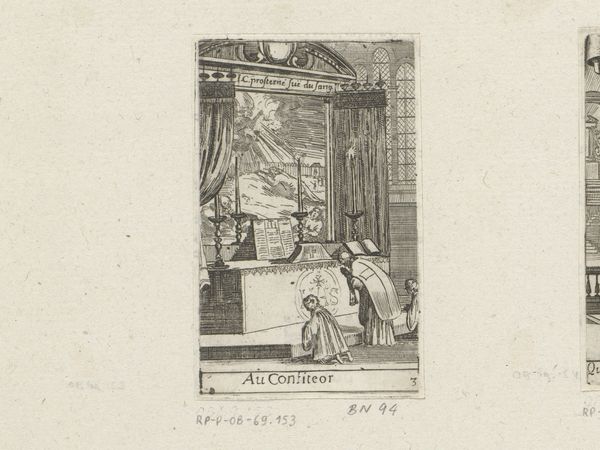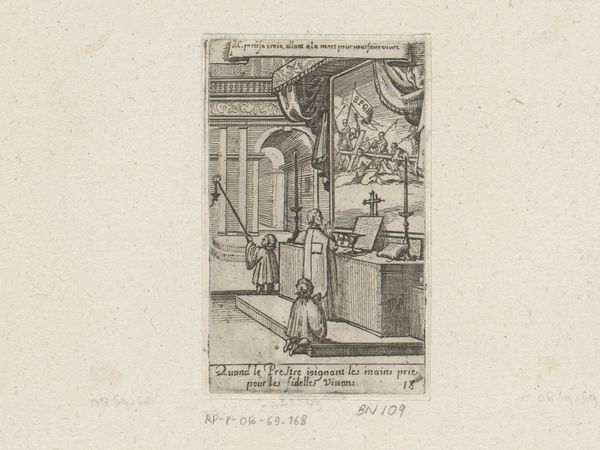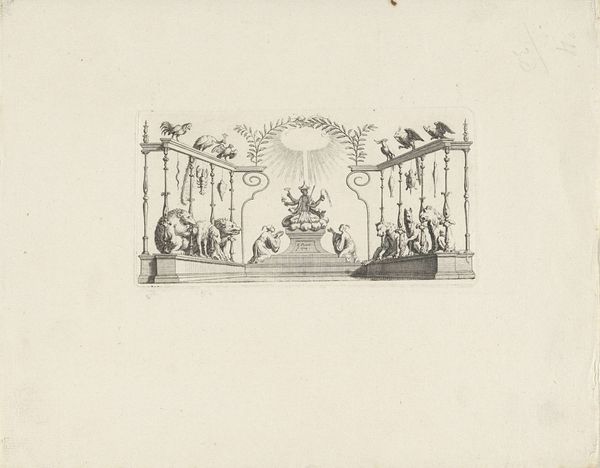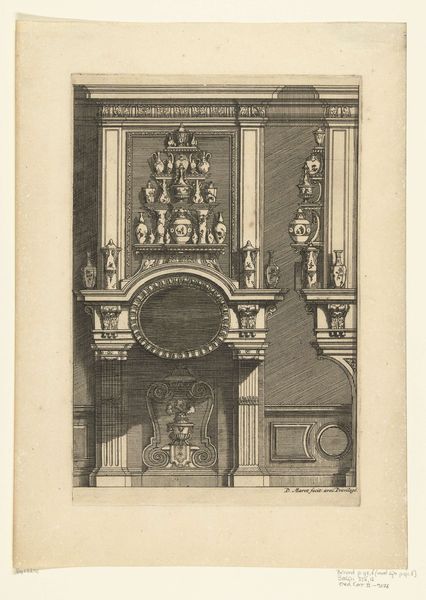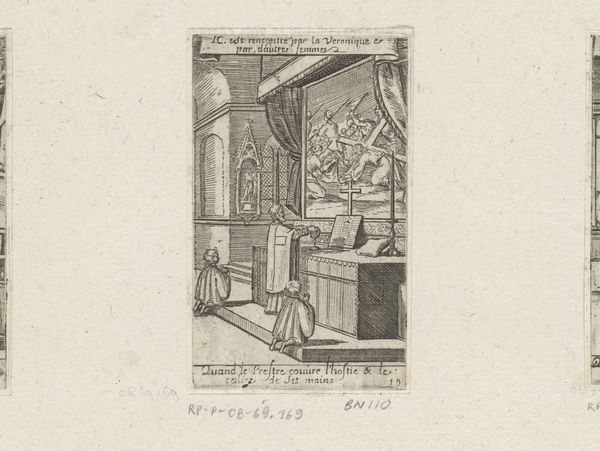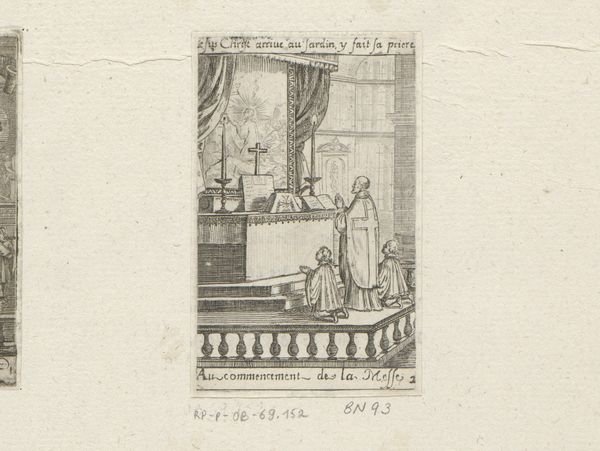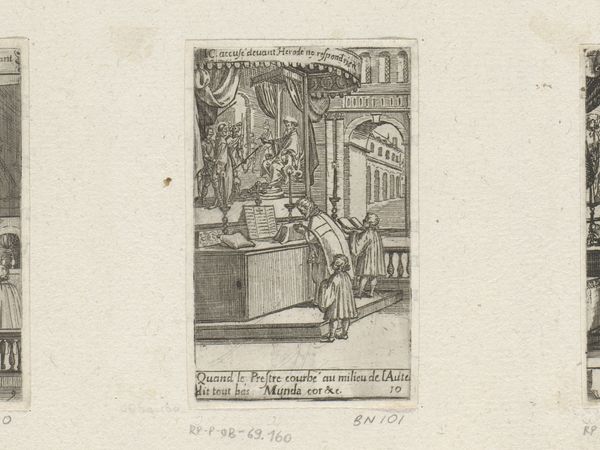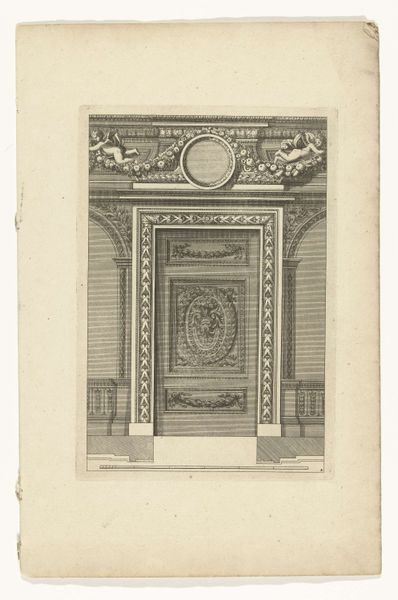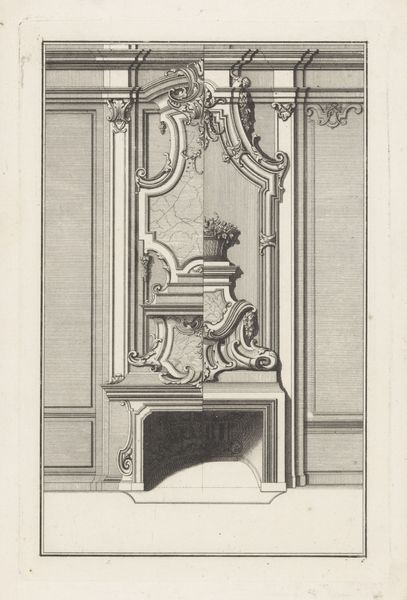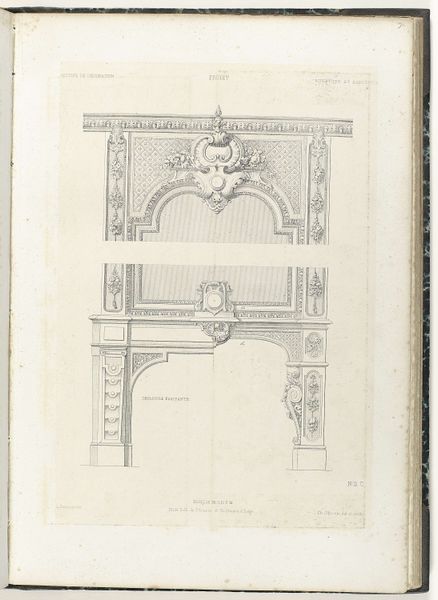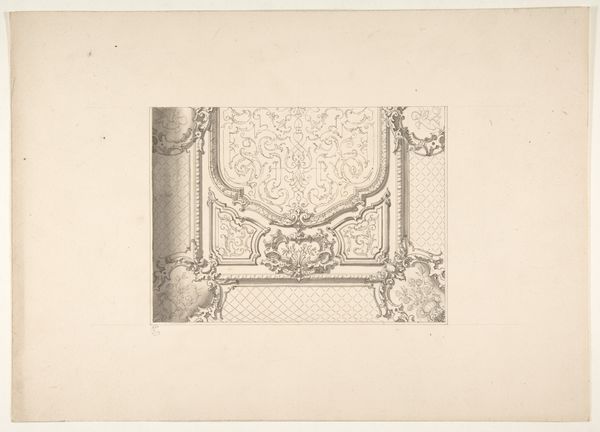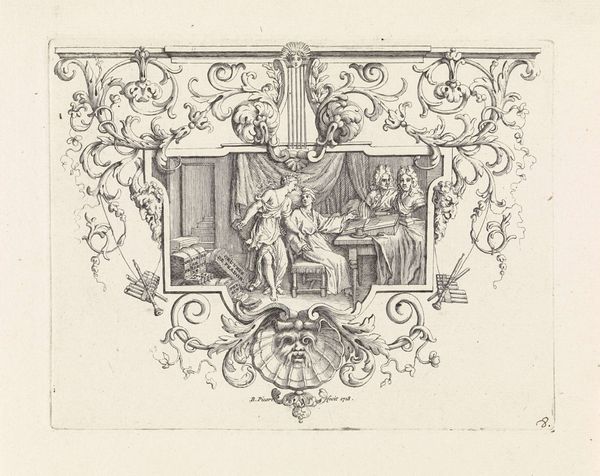
print, intaglio, engraving
#
baroque
# print
#
intaglio
#
line
#
history-painting
#
engraving
Dimensions: height 84 mm, width 51 mm
Copyright: Rijks Museum: Open Domain
Curator: The line engraving before us, titled "Priest at an Altar," was created in 1661 by Sébastien Leclerc I and resides in the Rijksmuseum. It's captivating, don't you think? What strikes you most about this small, intricate scene? Editor: The figures feel very staged, almost theatrical. I'm also intrigued by the two lines of text; one seems to reference Christ in the Garden of Olives and the other one reads, "When the priest comes to the altar." I'm wondering how the artwork could relate to broader ideas. What do you see in this piece? Curator: I see an interrogation of power and ritual within religious institutions. Consider the Baroque period—a time of immense religious and political upheaval. The priest, positioned prominently, embodies authority, but what power structures does he serve? The inclusion of the child also raises questions of indoctrination and inherited beliefs. What is the relationship to the male gaze? Editor: Indoctrination...that's interesting, especially given the placement of text alluding to Christ's Passion. Do you think Leclerc is making a commentary on faith versus the institution of the church? Curator: Precisely! And consider the context. The Baroque era was not just ornate; it was also a period of the Counter-Reformation. Art became a tool for propagating specific religious doctrines. How does Leclerc both participate in and perhaps subtly critique this use of art? Does he offer a genuine spiritual moment, or does he emphasize the performance of religion? Editor: That's fascinating. So by situating it within its historical and political context, we can see the engraving not just as a religious scene but also as a commentary on power, faith, and the role of the church in society. Thanks so much. Curator: Absolutely. Analyzing art through an intersectional lens, connecting its formal elements to broader social, political, and historical currents, provides a far richer and nuanced understanding of its meaning and impact. Always question, always contextualize!
Comments
No comments
Be the first to comment and join the conversation on the ultimate creative platform.
